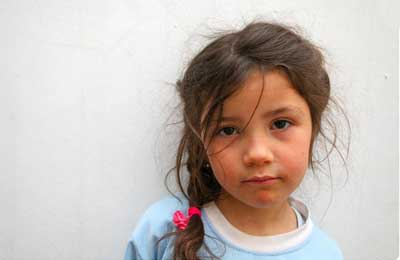
Sharp reduction in child mortality rate
Geneva, September 13, 2012
Between 2000 and 2011, the annual rate of reduction in the global child mortality rate jumped to 3.2 per cent, up from 1.8 per cent in 1990-2000, a Unicef report said, highlighting the pace of reducing child deaths.
Sub-Saharan Africa, the region with the greatest challenge in child survival, has doubled its rate of reduction, from 1.5 per cent per year in 1990-2010 to 3.1 per cent in 2000-2011, according to new data released by Unicef, the World Health Organisation, the World Bank and the UN Population Division.
An annual report by the UN Inter-agency Group for Child Mortality Estimation (UN-IGME) shows that in 2011, an estimated 6.9 million children died before their fifth birthday, compared to around 12 million in 1990.
Rates of child mortality have fallen in all regions of the world in the last two decades – down by at least 50 per cent in Eastern Asia, Northern Africa, Latin America and the Caribbean, South-eastern Asia and Western Asia, the report said.
An estimated 19,000 children still died every day in 2011, and around 40 per cent in the first month of life, most from preventable causes.
The gains in child survival, although significant, are still insufficient to achieve Millennium Development Goal 4 of reducing the global under-five mortality rate by two-thirds between 1990 and 2015. Only six of the world’s 10 regions are on track to reach the target. Proven solutions need to be expanded to accelerate progress on child survival faster and farther.
Committing to child survival
A Promise Renewed is a global movement to accelerate action on maternal, newborn and child survival and build on progress since 1990. More than 100 governments have since June renewed their commitment to child survival, according to the report.
Sub-Saharan Africa and Southern Asia face the greatest challenges in child survival, and currently account for more than 80 per cent of global under-five deaths. Their disparity with other regions is becoming more marked as regions such as Eastern Asia and Northern Africa have cut child deaths by more than two thirds since 1990.
Half of all under-five deaths occurred in five countries: India (24 per cent), Nigeria (11 per cent), Democratic Republic of the Congo (7 per cent), Pakistan (5 per cent) and China (4 per cent). India and Nigeria account for more than a third of all under-five deaths worldwide.
Globally, the leading causes of death among children under five are pneumonia (18 per cent of all under-five deaths), preterm birth complications (14 per cent), diarrhoea (11 per cent), complications during birth (9 per cent) and malaria (7 per cent).
The UN- IGME 2012 report calls for systematic action to reduce neonatal mortality as the proportion of under-five deaths during the neonatal period is rising in every region and almost all countries.
Highly cost-effective interventions are feasible even at the community level. Accelerating the reduction in under-five mortality is possible by expanding preventative and curative interventions that target the main causes of post-neonatal deaths and the most vulnerable children, the report said. – TradeArabia News Service







